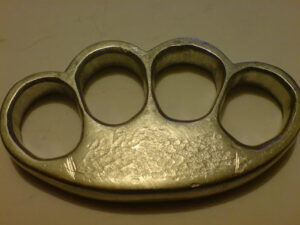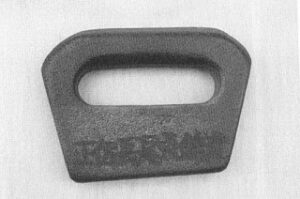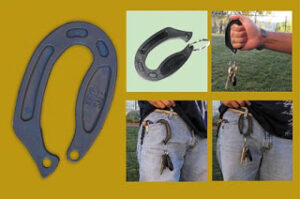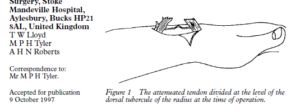This blog, and research for the book often take me off on some odd and interesting tangents, and this might be considered one of them!
I came across some interesting comments on knuckle dusters, which lead me to do some research. In many countries knuckle dusters are highly illegal. In some places being caught carrying one will get you in more trouble than carrying a loaded gun. I’m not going to discuss whether restrictions on inanimate objects rather than the use of them is a valid approach, this post is about engineering, and fashion!


Run a quick websearch and you will see that there are numerous uses of the knuckle duster in the fashion industry. Jewellery, belt buckles, handbag clasps, coffee cup handles and even high heels? There are also a large number of knuckle duster shaped paperweights for sale as “conversation pieces”. While there is considerable variation in knuckle duster design, the majority are of the same basic shape. This is particularly true of the fashion and conversation items. To look like a knuckle duster it must meet preconceptions of what most people think a knuckle duster looks like.
Let us consider actual functional knuckle dusters for a moment. To judge a weapon we need to actually view it in context. I’m going to work on the following assumptions:
The knuckle duster will be used for strikes that include, but are not limited to, punching.
The knuckle duster will be used as a concealed weapon. It will be carried hidden in normal clothing and should be capable of being brought into action quickly and smoothly.
The knuckle duster is intended as an intermediate force weapon. I am assuming that if the intention is to kill a weapon such as a knife of larger club would be used instead. This is probably the weakest of the three assumptions. Many knuckle dusters have spikes or sharp points and even the blunt basic models can inflict serious and even fatal wounds with relative ease.
There is a school of thought that knuckle dusters should not be used for conventional punching. “Invisible Weapons” by Jenks and Brown suggests what they call a raking motion. In the photos this looks like you are using your knuckles to rap on a door.
Don Rearic suggests “punch in a tearing and glancing manner and not necessarily straight on. In other words, you would hit with something similar to a vertical, rolling punch instead of something like a reverse punch.” While this is doubtless sound advice, many users will attempt to make conventional punches and a well-designed set of knuckle dusters should allow this option without injury to the hand. Knuckle dusters should also allow the use of kongo-type techniques too. In the Jenks and Brown book the inward rake would be followed by a backhand hammer fist type strike. Jenks and Brown’s book suggest carrying a knuckle duster inside the waist band, a few inches from the belt buckle. The first finger hooks into the top ring and pulls the weapon out so the rest of the hand takes hold. Knuckle dusters will also be carried in various pockets.

In light of the above, let use have a look at the "traditional" knuckle duster (above). Most have a T or π shaped part known as the brace. This transmits force from the palm of the hand to the target. In a properly designed knuckle duster the fingers and real knuckles play not part in actual striking, serving just to keep the weapon in position. If you consider the shape of most braces you will realize they feature unnecessary projections that are likely to get caught on pocket linings or other clothing when an attempt is made to draw the weapon. The design below seems more logical.

Let us look at the finger rings. I am told that well designed knuckle dusters have oval rings. Circular finger openings are more likely to injure your hand. What is the point of using a knuckle duster if you are still likely to hurt your hand punching. On that topic, we need to consider the mechanics of punching. In his book Jack Dempsey notes that the line of force when you punch aligns with the knuckle of the little finger. Since this is quite a small delicate body part fighters are trained to hit with the larger knuckle of the ring finger. Many other fighting styles also train to hit with the lower two knuckles of the hand. Karate hits with the second knuckle or first two knuckles but this is because turning the fist horizontal shifts the line of force.
Many knuckle duster have projections or even spikes to concentrate force, yet generally they have these aligned with the fingers rather than the gaps between. It seems logical to me that there should be a point between the third and fourth and first and second fingers as well? And you might as well put one in the middle as well. If we look at this photo of a knuckle duster we see a lot of airspace between the rings that could be more usefully filled without compromising the envelope of the weapon. Possibly the protections on the first and last fingers should be angled to reflect these parts might be used for glancing blows.
Punching isn’t the only technique that can be used with knuckle dusters. The hammer-strike can be very effective but the design of most knuckle dusters necessitates the impact being made with the edge of a finger ring. As a long time advocate of the kongo I would prefer a striking area more in line with the palm as would be the case when using empty hand and Kongo techniques. I do not think extending the brace area to project from the hand would greatly hinder the overall concealability of the knuckle duster.

This is a photo of a typical pattern of tekko, and eastern equivalent to the western knuckle duster. Obviously concealment was a lower priority in the design of this weapon but it will be noted that it is effectively a kongo/ yawara stick with a knucklebow. Note also that the three studs align with the gaps between fingers rather than the fingers.














